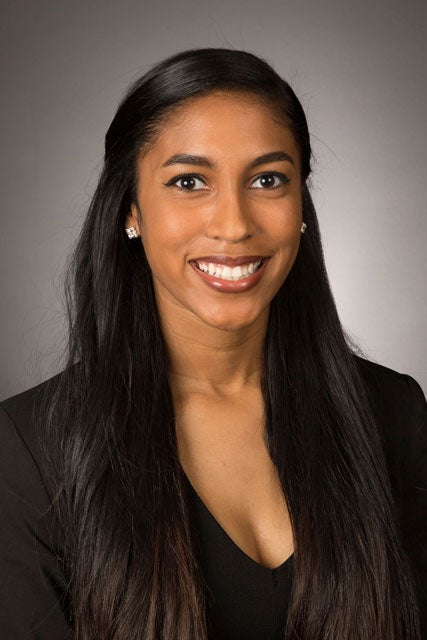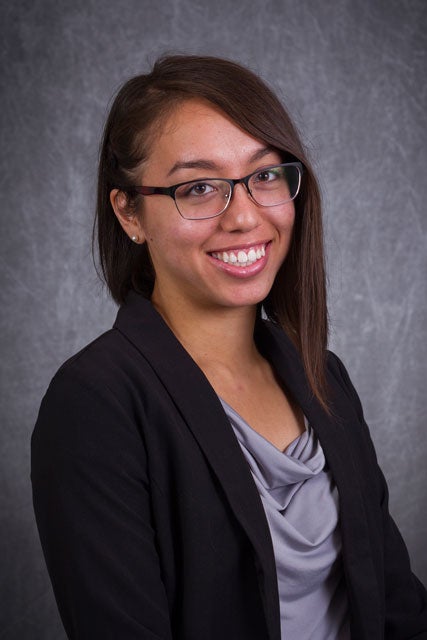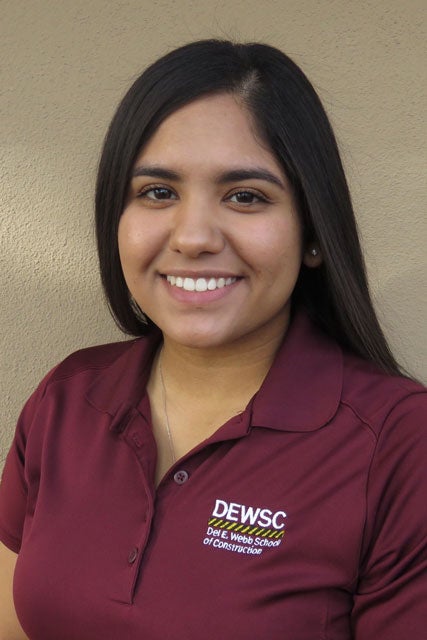This is part two of a three-part series. Access the introduction and additional sections
Diverse engineers for diverse technology
Women have played pivotal roles in science and engineering innovation for decades, but their contributions haven’t always been in public view.
In recent years, this has started to change.
Last month, President Barack Obama awarded the Presidential Medal of Freedom, the highest civilian honor in the nation, to two great 20th century women in science and technology: Margaret H. Hamilton, a mathematician and computer scientist who led the team that developed NASA’s Apollo module on-board flight software, and the late Rear Admiral Grace Hopper, a computer programming pioneer from the 1940s through the 1980s who created the compiler. They joined 19 others, including household names in art, sports and philanthropy, honored as highly admirable contributors to our society.
This kind of visibility on women in STEM is critical for the future of women in these fields, as girls and young women are gaining prominent role models to demonstrate that this is a career path where they, too, can be successful.
“If you look up and see no one like you, it is hard to envision your own career path,” said Nadya Bliss, professor of practice in computer science and director of the Global Security Initiative at Arizona State University.
It’s important that engineering and technology fields attract women because they need women to be successful.
“If we want our technology to be for diversity of users, diversity of people should make it,” Bliss said. “You can’t engineer solutions for a diverse world with a non-diverse segment of the population.”
The Ira A. Fulton Schools of Engineering are committed to balancing the STEM population with the general population. Numerous programs and organizations at the Fulton Schools aim to increase gender diversity in science and engineering, led by women who have found their passion in various engineering fields and are now helping others pursue these rewarding career paths.

Through their eyes
Juliana Vazquez, junior, civil engineering
Juliana Vazquez didn’t grow up with an interest in engineering, or even an awareness of what an engineer did. But now she’s leading the ASU chapter of the Society of Women Engineers and making sure young girls do grow up with engineering in mind for their futures.
With academic strengths in math and science, in high school Vazquez first considered architecture. Upon exploring ASU’s degree programs as a junior, however, she discovered civil engineering fit her skill set and interests better than architecture. This discovery set her off on an engineering path she never imagined she would pursue.
“Civil engineering seemed like the best option at the time and for me it still is,” said Vazquez, who is also a student in Barrett, the Honors College. “The major is so broad that you can see what you like best and go with it.”
Vazquez has been making the most of her time at ASU, getting involved in Phi Sigma Pi, a gender-inclusive national honor fraternity, and even playing on the ASU women’s rugby team.
“ASU and the Fulton Schools provide so much to their students to be successful,” Vazquez said. “From E2 Camp to FURI to the Grand Challenge Scholars Program to job opportunities, the list goes on and on.”
Next semester she’ll begin undergraduate research in the Fulton Undergraduate Research Initiative. She hopes to also get an internship to help her decide on a subfield of civil engineering for when she pursues her master’s after graduating in 2018.
As she continues to explore her own options in civil engineering concentrations and careers, Vazquez helps other Fulton Schools women engineers as president of SWE at ASU.
SWE aims to help women be successful as engineering professionals and leaders, expand the perception of engineering as a positive force in improving quality of life and demonstrate the value of diversity in engineering.
“SWE at ASU is very focused on professional development,” Vazquez said. “We have local companies come to our general body meetings to speak to our members about what they do, who they are looking for and why they should apply. We also hold a company panel which includes a few different companies who answer any questions that our members might have about them.”
Throughout the year, SWE also hosts informal networking events with professors and professionals for members to find opportunities in research and to learn about companies’ recruitment and interview processes without the nerves involved in a career fair or formal event.
Though the number of women pursuing engineering majors and careers is improving, Vazquez believes there still aren’t enough women in engineering.
For next year, SWE is working on adding to its Girl Scouts for Engineering Awareness and Retention Day (G.E.A.R.) program, an outreach event for local Girl Scout troops where they work on STEM-related projects.
“This year we are hoping to bring in industry professionals to speak with the parents about the opportunities of a STEM-related major,” Vazquez said.
Vazquez believes women’s professional organizations play a huge role in attracting female students to engineering, especially through outreach events that aim to introduce engineering to students who were never exposed to the field.
“All students should know about STEM opportunities out there for them,” Vazquez said. It shouldn’t be a choice between a doctor or lawyer for a high paying, prestigious job — it should be doctor, lawyer or engineer.”
Waverly Roeger, senior, computer science
Waverly Roeger was once unsure about pursuing computer science because she felt uncomfortable being only one of two girls who clashed with the boys in her high school computer science class.
Roeger applied for college as a math major due to her lack of confidence with the engineering community until she met Professor Deborah Trytten of the University of Oklahoma, the first women she encountered in the field, who discussed the projects she was working on.
“I came away with a newfound confidence that I would find a community within computer science,” Roeger said. “I changed my plans and have never regretted it since.”
Once she arrived at ASU she started getting involved with the ASU STEM community as often as she could. The senior has now participated in the Fulton Schools’ Grand Challenge Scholars Program and Engineering Projects in Community Service and helped incoming freshmen as a counselor at E2 Camp. She has also mentored with the Arizona Mentor Society and the Barrett Mentoring Program, and even served as the music manager of the ASU Outreach Choir. She currently mentors with Global Guides and is secretary of the Hearthstone Club for players of the virtual card strategy game.
Now she leads the Women in Computer Science organization at ASU to help others feel confident in pursuing their passions.
“Women in Computer Science is an organization at ASU that acts as a support network and resource for female and other minority students,” said Roeger, who is also a student in Barrett, the Honors College.
Throughout the year they host K-12 outreach, professional development, coding competitions and social events. They help members prepare for technical interviews, discuss topics from all-female classes to grad school to entrepreneurship, and volunteer with their outreach partners.
“I believe how we most help our members is by connecting them to each other,” Roeger said. “Having a network of peers to relate to and rely on is so essential when you are always the odd one out in your classes.”
These connections are crucial to attracting and retaining women in engineering and technology, Roeger said.
“Women’s engineering organizations are so vital for us to first realize we are not alone, from friendships with people who have similar experiences, to support from each other when we need it,” she says.
Roeger also wishes for women to be more visible in STEM than they are now.
“If young girls can see it, they know it’s possible and they are free to dream,” Roeger said.
After she graduates in May 2017 her outreach efforts won’t stop there. She plans to start her career as a software developer and continue to work in women- and diversity-focused programs as well as K-12 educational outreach “to show girls the awesomeness of programming when they’re young and imaginative.”
She strongly believes having more women and other underrepresented groups in STEM will help better serve the world.
“It’s important to recognize the value that diversity brings to teams of engineers who are engineering for a diverse population,” Roeger said.
Vanessa Sanchez, senior, construction management
Vanessa Sanchez got her start in construction with a suggestion from her family. Her uncle, who owns his own company in the construction industry, saw a need for women in the field and thought it would be a great fit.
Though she was unsure when she began her college career about what major was right for her, once she took a few construction classes and broke ground in the Fulton Schools construction management program, she knew it was the right choice.
“Now I can’t see myself in any other industry,” Sanchez said.
The construction management senior has funneled her developing passion for construction as the president of Advancing Women in Construction, a Fulton Schools organization that offers mentorships, networking events and volunteer opportunities to students in the Del E. Webb School of Construction.
“We strive to increase and retain the number of women graduating from DEWSC,” said Sanchez, who is proud that more women are becoming informed and encouraged to pursue STEM majors and degrees. “Engineering is a male-dominated industry, and at times it can be intimidating. Organizations like AWIC are a way for females to feel like they belong.”
Sanchez says women’s professional and engineering organizations are important for students’ continued success, and she especially believes the opportunity to build a professional network benefits members.
“Women’s organizations have motivated me to continue pursuing a career in construction as they have provided me with the opportunity to network with successful women in the industry,” Sanchez said. “Without organizations such as AWIC, I would not have the opportunity to network with as many females in the industry.”
Over the summer, Sanchez and fellow AWIC members joined more than 300 construction industry professionals at the Women in Construction West Coast Conference in San Diego. They participated in two days of networking, educational presentations and panel discussions that gave insights into careers in construction.
She also believes it’s important to put effort into recruiting and informing young students about construction and other STEM majors and careers. To this end, AWIC conducts outreach activities, including their annual AWIC Girl Scout Wagon Build, where AWIC volunteers assist local Girl Scout troops in constructing wagons to use during their annual cookie sales.
“The Wagon Build gives AWIC an opportunity to inform the Girl Scouts about the opportunities for women in the construction industry,” Sanchez said.
After graduating in spring 2017, Sanchez plans expand her construction knowledge before to work her way up to another leadership role.
“I want to work with a general contractor in the construction industry to gain as much knowledge as possible,” Sanchez said. “Eventually, my ultimate career goal is to successfully operate a residential construction company.”

More Science and technology

ASU and Deca Technologies selected to lead $100M SHIELD USA project to strengthen U.S. semiconductor packaging capabilities
The National Institute of Standards and Technology — part of the U.S. Department of Commerce — announced today that it plans to…

From food crops to cancer clinics: Lessons in extermination resistance
Just as crop-devouring insects evolve to resist pesticides, cancer cells can increase their lethality by developing resistance to…

ASU professor wins NIH Director’s New Innovator Award for research linking gene function to brain structure
Life experiences alter us in many ways, including how we act and our mental and physical health. What we go through can even…



